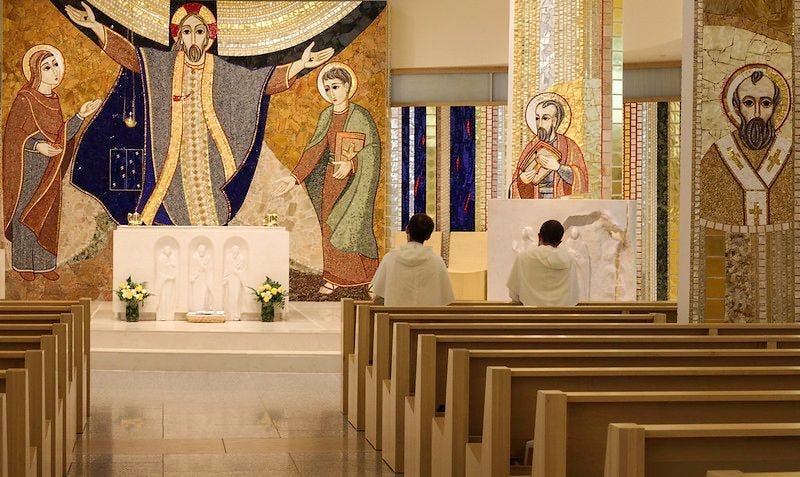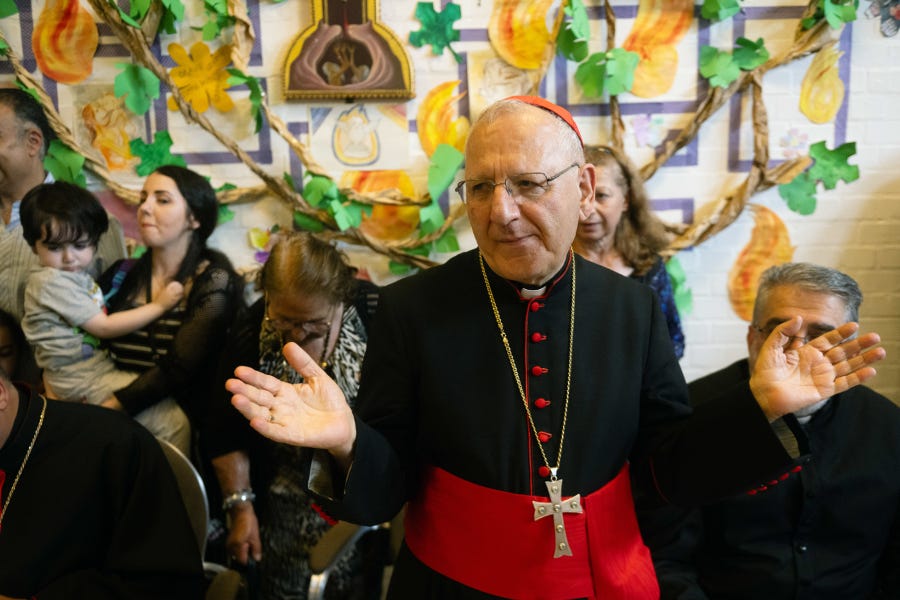Justifying the annexation of Crimea in a 2014 speech, Vladimir Putin didn't stop with political arguments — indeed, he went much further. He offered a framework for a worldview that would define his years in Russia’s presidential office, and that would be repeated frequently by both Putin’s political allies, and by leaders of the Russian Orthodox Church.
Understanding that worldview is key to understanding the Russian invasion unleashed last month in Ukraine. But also important is understanding its impact on Vatican ecumenical dialogues with the Russian Orthodox Church, which seem certain to change in light of Russia’s armed incursion into its neighboring country.
Recalling St. Vladimir, the Prince of Kyiv and Putin’s namesake, the Russian president argued in 2014 that the prince’s 988 conversion to Eastern Orthodoxy “predetermined the overall basis of the culture, civilization and human values that unite the peoples of Russia, Ukraine, and Belarus.”
That moment, in Putin's famous “Crimean speech,” capaciously and aptly reflected the Russkiy Mir — the “Russian world” ideology prevalent in the Russian political and Church establishment. It also framed the geographic area of Putin’s special attention.
Until 2000, the Russkiy Mir was mostly a matter of intellectuals. But with the beginning of the 21st century, it became a semi-official strategy of both Russian politicians and leaders of the Moscow Patriarchate concerning Russia's neighbor-states.
In their view, the “Russian world” covers almost the whole of Eastern Europe — all the territories that at different times were parts of the Russian Empire and the Soviet Union, including the diasporas of these countries in other parts of the world.
As the “Russian world” paradigm began to grasp Putin’s political imagination, Russian leadership started to push its neighbor states to the closest possible economic, military, political, and cultural integration.
The Russian Orthodox Church (ROC), in turn, played a soft power role, as its network of parishes, which survived the collapse of the Soviet Union, remained one of the most effective instruments of influence in other countries.
Elena Volkova, an intellectual and former professor at Moscow State University, said in Ukraine recently that the “Russian world” ideology can be reduced to a brief conclusion:
“Russia must regain the territory of the empire. Monopoly power over souls must belong to the ROC. Any talk of state or ecclesiastical independence is seen as the work of an enemy, who is immediately demonized as a Satanist and schismatic, an enemy of the Church.”
There have been few problems with implementing this strategy in Belarus, but in Ukraine, the “Russian world” political agenda encountered severe obstacles to its introduction.
It seems to many analysts that Russian political leadership never really thought about the differences in the cultural and political history of Russia and Ukraine. And for the Russian Orthodox Church, the situation was even more difficult, in part because of Ukraine’s religious diversity.
“The Ukrainian religious palette is quite diverse,” Taras Antoshevskyi, director of the Religious Information Service of Ukraine, told The Pillar.
In Ukraine, “there are well-developed structures of the Greek Catholic and Roman Catholic Churches, which, although they are a minority - only 10% of Ukrainians are Catholics - have a strong influence on socio-religious processes in the country.”
“Ukrainian Orthodoxy, in turn, has been divided since 1989: a part remained in unity with the Moscow Patriarchate (UOC-MP), while another group sought independence, and in 2019 received a tomos of autocephaly from the Patriarchate of Constantinople (OCU),” Antoshevski added.
“And then there are many Protestant communities that are very socially active.”
The “Russian world” ideology was somewhat popular among the UOC (MP) and the older generation, which wanted the restoration of the Soviet Union, but it was negatively perceived by the members of other churches, and by broader Ukrainian society.
The presence of the Ukrainian Greek Catholic Church in Ukraine has become perhaps the most severe problem for the ROC.
During a 2009 visit to Ukraine, Patriarch Kirill of Moscow described in a sermon Ukrainian Greek Catholics as people who tried “to change people's lives by force, to change their culture, their faith, their national identity.”
Kirill’s point was clear: Ukrainian culture and identity belongs to the “Russian world,” and Ukrainian Greek Catholics have interfered with that.
Not wanting to resolve mutual historical disagreements with the Ukrainian Greek Catholics directly, the Moscow Patriarchate has sought to solve its problem with the hands of the Vatican.
Since the 1990s, almost all efforts of the ROC in the Catholic-Orthodox dialog were focused on the solution of “the uniate question” — namely, the ecclesiological and cultural problems posed for the ROC by the existence of the Ukrainian Greek Catholic Church.
Taking advantage of the Vatican’s desire to continue dialoguing with the Russian Church, the leadership of the Moscow Patriarchate aimed to push the Vatican toward a return to the situation pre-1989, when the Ukrainian Greek Catholic Church was officially banned in the USSR and existed after 1946 only in the underground and in the diaspora.
After the annexation of Crimea, and on the eve of the visit of Vatican Secretary of State Cardinal Pietro Parolin to Moscow in 2017, Metropolitan Hilarion Alfeev, who is effectively the Minister of Foreign Affairs for the Moscow Patriarchate, once again reiterated that “the most painful problem in relations between our Churches is the Union, which has been causing serious harm to Orthodox-Catholic relations in general for centuries.”
[ed. note: “the Union” refers to the Union of Brest, the 1596 decision which created the Ukrainian Catholic Church.]
Hilarion’s view is not entirely foreign to some Vatican supporters of Ostpolitik, ready to dialogue with Moscow even at the expense of Ukrainian Eastern Catholics.
And indeed, the 1980s emergence of the Ukrainian and Romanian Greek Catholic Churches from the underground did affect the ecumenical process. But that situation revealed the extent to which the Catholic-Orthodox dialogue depended on the situation in post-war Europe.
Fr. Andrii Mykhaleiko, a Church historian at the Catholic University of Eichstätt-Ingolstadt in Germany, told The Pillar that “the situation after 1989 confirmed that the dialogue between the Catholic and Orthodox Churches was so dependent on the geopolitical and ecumenical status quo of the 1970s and 1980s, and neither Orthodox nor Catholics could foresee the 1989 changes.”
Since 1989, the political situation in Eastern Europe has changed dramatically, but the ecumenical dialogue, at least in this part of the world, has seemed to remain to many Ukrainians a hostage to Russia's efforts to rebuild the empire under the guise of the “Russian World.”
But the Russian aggression against Ukraine has raised the question of revising the Vatican's Ostpolitik, as both a matter of foreign policy and ecumenical dialogue.
And for many Ukrainians watching the Vatican’s approach to dialogue with Moscow, the last few weeks have made clear what Catholics in Eastern Europe argued for decades: that aiming to maintain relations between the Holy See and dictatorships at near any cost would only harm the Catholic Church and its mission in the world.
If nothing else, the war seems certain to change the contours of the Vatican’s ecumenical dialogues, and fast.
Dr. Oleh Turii, vice-rector of the Ukrainian Catholic University, told The Pillar this week that:
“We see how people are uniting now around foundational principles and values of good for the future of humankind. This gives us hope that it will also cure the ecumenical dialogue soon.”
“Sincere inter-Christian relations can't be built on ultimatums, lies, or ideologies. They can develop only on the ground of the sincere desire of both sides to restore the unity of the Church.”



